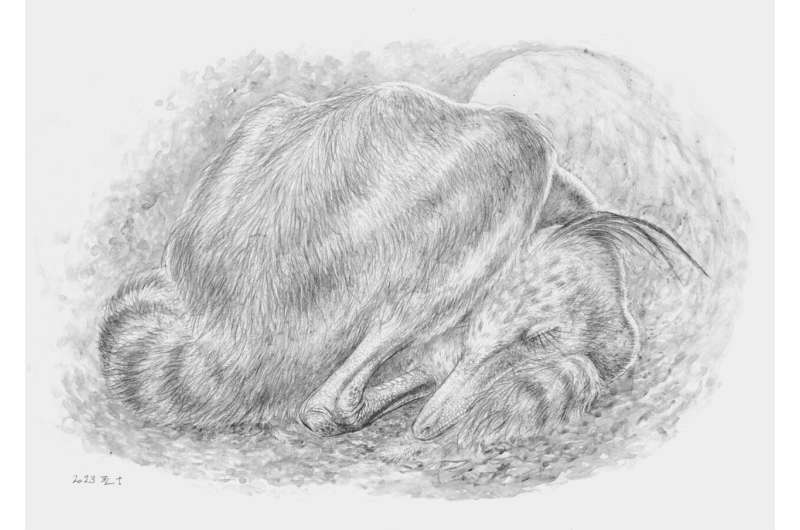November 23, 2023 report
This article has been reviewed according to Science X's editorial process and policies. Editors have highlighted the following attributes while ensuring the content's credibility:
fact-checked
peer-reviewed publication
trusted source
proofread
Fossil unearthed in Mongolia's Gobi Desert suggests some dinosaurs slept in same position as modern birds

A team of paleontologists and biologists from Hokkaido University, Hokkaido University Museum, North Carolina State University and the Mongolian Academy of Sciences, has uncovered a previously unknown species of dinosaur that appears to have slept in the same position as modern birds.
In their paper published in the open-access journal PLOS ONE, the group describes where the fossil was found, its condition, and the unique position in which the specimen had folded itself before dying.
Until recently, members of the Alvarezsauridae family, a group of small therapods (carnivorous bipedal dinosaurs), were believed to be a kind of flightless bird—now, they are classified as Maniraptoran dinosaurs, a type that is non-avian but is still related to modern birds. In this new study, the researchers found a new species of Alvarezsauridae they have named Jaculinykus yaruui. It translates to "speedy, tiny dragon" and has a lineage with a group that had several bird-like features.
The fossil was found at a dig site in Mongolia's Gobi Desert called the Barun Goyot Formation, embedded in rock in a place called Nemegt. The site has yielded a number of dinosaur fossils over the past several years. The newly found fossil has been dated to approximately 71 million years ago. The team describes it as being in very good condition—it is a nearly complete, 3D preserved fossil.
When alive, the research team estimates the dinosaur would have been nearly a meter tall and weighed approximately 30 kilograms. What was most interesting about the fossil, however, was its position. It appeared to have settled in for a nap with its neck and tail bent to make laying down more comfortable. It also had its hind limbs folded under its pelvis. The position is similar to the sleeping position of modern birds. The finding suggests that Maniraptorans in general may have slept in the same position as modern birds.
Prior research has suggested that modern birds curl up when they sleep as both a means of comfort and to preserve heat. This finding suggests that Maniraptorans were also trying to keep warm as they slept.
More information: Kohta Kubo et al, A new alvarezsaurid dinosaur (Theropoda, Alvarezsauria) from the Upper Cretaceous Baruungoyot Formation of Mongolia provides insights for bird-like sleeping behavior in non-avian dinosaurs, PLOS ONE (2023). DOI: 10.1371/journal.pone.0293801
Journal information: PLoS ONE
© 2023 Science X Network





















